-
 Bitcoin
Bitcoin $116400
-0.36% -
 Ethereum
Ethereum $4033
3.40% -
 XRP
XRP $3.302
-1.26% -
 Tether USDt
Tether USDt $1.000
-0.02% -
 BNB
BNB $796.1
1.67% -
 Solana
Solana $177.8
1.89% -
 USDC
USDC $0.9999
0.00% -
 Dogecoin
Dogecoin $0.2314
4.09% -
 TRON
TRON $0.3381
0.14% -
 Cardano
Cardano $0.7989
1.22% -
 Stellar
Stellar $0.4496
-1.84% -
 Chainlink
Chainlink $20.42
9.42% -
 Hyperliquid
Hyperliquid $41.17
0.88% -
 Sui
Sui $3.914
3.77% -
 Bitcoin Cash
Bitcoin Cash $584.7
1.52% -
 Hedera
Hedera $0.2632
-0.54% -
 Avalanche
Avalanche $24.09
3.40% -
 Ethena USDe
Ethena USDe $1.001
-0.02% -
 Litecoin
Litecoin $123.2
1.33% -
 Toncoin
Toncoin $3.318
-0.04% -
 UNUS SED LEO
UNUS SED LEO $8.984
-0.05% -
 Shiba Inu
Shiba Inu $0.00001323
2.85% -
 Uniswap
Uniswap $10.90
4.41% -
 Polkadot
Polkadot $3.999
3.34% -
 Dai
Dai $1.000
0.01% -
 Cronos
Cronos $0.1630
9.64% -
 Bitget Token
Bitget Token $4.484
0.82% -
 Monero
Monero $272.4
2.44% -
 Pepe
Pepe $0.00001173
6.03% -
 Aave
Aave $290.8
2.88%
Is EMV a buying point when it breaks through the zero axis? Does it need to cooperate with trading volume?
EMV's breakthrough above zero, coupled with high volume, signals a strong buying opportunity, but confirmation from other indicators is crucial.
Jun 02, 2025 at 05:50 pm
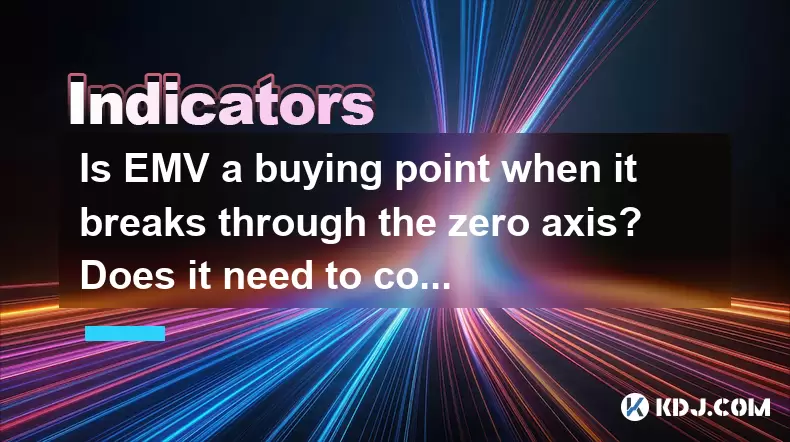
Understanding EMV and Its Breakthrough of the Zero Axis
The Ease of Movement Value (EMV) is a technical indicator that measures the relationship between price changes and volume. It helps traders identify how easily prices can move in a given direction. When the EMV breaks through the zero axis, it suggests a potential shift in market momentum. But is this a buying point, and does it need to cooperate with trading volume?
The EMV indicator calculates the ease with which prices move, taking into account both the price range and the volume. A positive EMV value indicates that prices are moving upwards with relative ease, while a negative value suggests downward movement. The zero axis serves as a neutral point, separating bullish from bearish territories. When the EMV crosses this axis, it signals a potential change in the prevailing trend.
Analyzing the Zero Axis Breakthrough as a Buying Point
When the EMV breaks through the zero axis from negative to positive, it can be interpreted as a signal that buying pressure is increasing. This could be a potential buying point, but it's crucial to consider other factors to validate this signal.
The EMV's transition from negative to positive suggests that the market may be transitioning from a bearish to a bullish phase. However, relying solely on this indicator can lead to false signals. Traders often look for confirmation from other technical indicators or price action patterns to increase the reliability of their trading decisions.
The Role of Trading Volume in EMV Analysis
Trading volume plays a significant role in confirming the signals provided by the EMV. When the EMV breaks through the zero axis, it is essential to observe whether this movement is accompanied by an increase in trading volume.
An increase in trading volume alongside the EMV's breakthrough can validate the signal, indicating stronger market participation and a higher likelihood of a sustained trend change. Conversely, if the EMV breaks through the zero axis but volume remains low, the signal may be less reliable, suggesting a potential false breakout.
Combining EMV with Other Technical Indicators
To enhance the effectiveness of the EMV as a buying signal, traders often combine it with other technical indicators. Some commonly used indicators include moving averages, the Relative Strength Index (RSI), and the Moving Average Convergence Divergence (MACD).
Using the EMV in conjunction with moving averages can help identify trend direction and strength. For instance, if the EMV breaks above the zero axis and the price is also above a key moving average, this can provide a stronger bullish signal. Similarly, combining the EMV with the RSI can help confirm overbought or oversold conditions, adding another layer of validation to the trading signal.
Practical Application: Trading with EMV and Volume
To effectively use the EMV and trading volume in your trading strategy, follow these steps:
- Identify the EMV's position relative to the zero axis: Monitor the EMV on your trading chart. Look for instances where the EMV crosses from negative to positive, indicating a potential shift towards bullish momentum.
- Check the trading volume: Once the EMV breaks through the zero axis, observe the volume bars on your chart. Look for a noticeable increase in volume, which can confirm the strength of the breakout.
- Confirm with other indicators: Use additional technical indicators to validate the EMV signal. For example, if the price is above a significant moving average and the RSI is not in overbought territory, this can add credibility to the bullish signal.
- Execute the trade: If all conditions are met, consider entering a long position. Place a stop-loss order below a recent low to manage risk and set a target based on key resistance levels or technical analysis.
Case Studies: EMV Breakthroughs and Trading Volume
To illustrate the practical application of the EMV and trading volume, consider the following case studies:
Case Study 1: In a hypothetical scenario, the EMV for a particular cryptocurrency breaks above the zero axis, accompanied by a significant increase in trading volume. The price is also above the 50-day moving average, and the RSI is at 60, indicating neither overbought nor oversold conditions. This combination of signals suggests a strong buying opportunity, and a trader might enter a long position with a stop-loss order placed below the recent low.
Case Study 2: In another scenario, the EMV breaks above the zero axis, but trading volume remains low. Despite the bullish signal from the EMV, the lack of volume suggests a weaker breakout. The price is also below the 50-day moving average, and the RSI is at 70, indicating overbought conditions. In this case, a trader might choose to wait for additional confirmation before entering a trade.
Frequently Asked Questions
Q1: Can the EMV be used as a standalone indicator for trading decisions?
A1: While the EMV can provide valuable insights into market momentum, it is generally more effective when used in conjunction with other technical indicators and price action analysis. Relying solely on the EMV may lead to false signals, so it's important to seek confirmation from other sources.
Q2: How often should traders check the EMV and trading volume?
A2: Traders should monitor the EMV and trading volume regularly, especially during periods of high market volatility. Checking these indicators on a daily basis can help identify potential trading opportunities and confirm trend changes.
Q3: Is the EMV more effective in certain market conditions?
A3: The EMV can be effective in various market conditions, but it is particularly useful in trending markets where momentum plays a significant role. In choppy or sideways markets, the EMV may generate more false signals, so traders should adjust their strategies accordingly.
Q4: Can the EMV be used for short-term or long-term trading?
A4: The EMV can be applied to both short-term and long-term trading strategies. For short-term trading, traders might focus on shorter timeframes and use the EMV to identify intraday momentum shifts. For long-term trading, the EMV can help confirm broader trend changes and guide position sizing and risk management.
Disclaimer:info@kdj.com
The information provided is not trading advice. kdj.com does not assume any responsibility for any investments made based on the information provided in this article. Cryptocurrencies are highly volatile and it is highly recommended that you invest with caution after thorough research!
If you believe that the content used on this website infringes your copyright, please contact us immediately (info@kdj.com) and we will delete it promptly.
- SHIB Price, Meme Coin Mania, and the 250x Potential Hunt
- 2025-08-09 16:30:13
- SOL, ETFs, and AI: Crypto's Triple Threat Sensation!
- 2025-08-09 17:10:12
- Tokenized Stock on Solana: SOL Price Reacts to Exodus's Bold Move
- 2025-08-09 17:10:12
- Cardano, Mutuum Finance, Millionaires 2025: A New Wave of Crypto Fortunes?
- 2025-08-09 17:50:12
- Meme Coins on Blockchains in 2025: Hype or the Future?
- 2025-08-09 16:50:11
- World Liberty Financial, Public Listing, and WLFI Tokens: A New York Minute on the Trump-Backed Crypto Venture
- 2025-08-09 16:50:11
Related knowledge

What does it mean when the Triple Moving Average (TRIX) turns downward but the price doesn't fall?
Aug 09,2025 at 12:42pm
Understanding the Triple Moving Average (TRIX) IndicatorThe Triple Moving Average, commonly known as TRIX, is a momentum oscillator designed to filter...

What does it mean when the Williams' oscillator repeatedly hits bottoms but fails to rebound?
Aug 09,2025 at 09:28am
Understanding the Williams %R OscillatorThe Williams %R oscillator, developed by Larry Williams, is a momentum indicator used in technical analysis to...
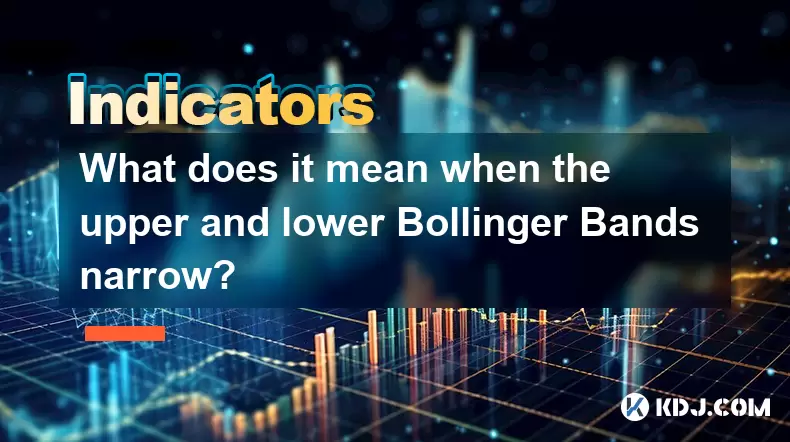
What does it mean when the upper and lower Bollinger Bands narrow?
Aug 09,2025 at 03:00pm
Understanding Bollinger Bands in Cryptocurrency TradingBollinger Bands are a widely used technical analysis tool in the cryptocurrency market, develop...
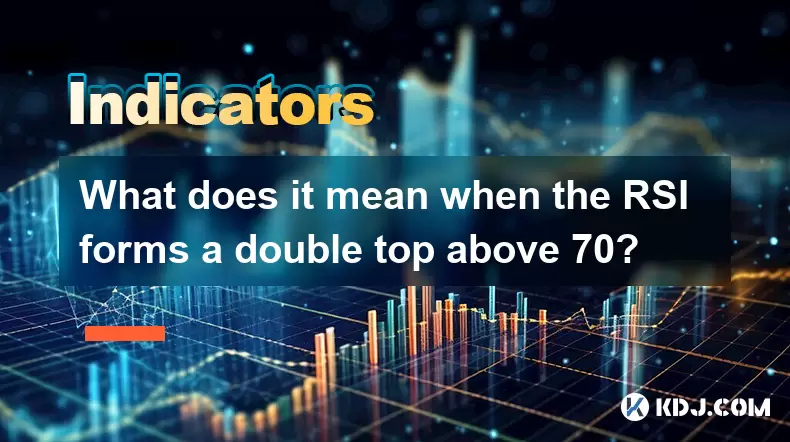
What does it mean when the RSI forms a double top above 70?
Aug 09,2025 at 05:50pm
Understanding the RSI and Overbought ConditionsThe Relative Strength Index (RSI) is a momentum oscillator that measures the speed and change of price ...
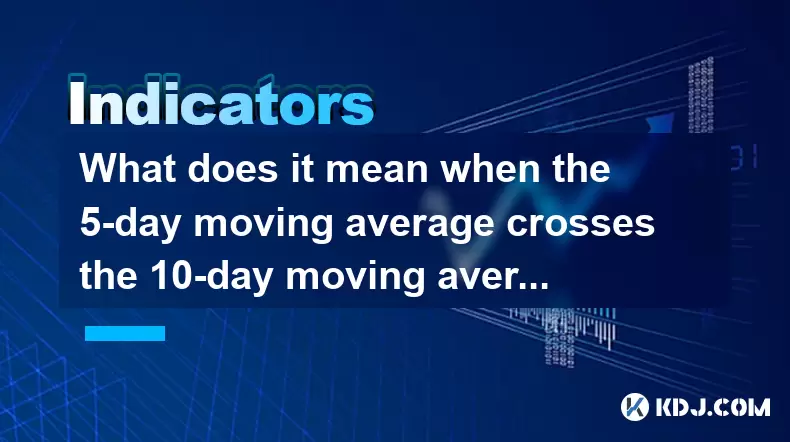
What does it mean when the 5-day moving average crosses the 10-day moving average but the 20-day moving average remains upward?
Aug 09,2025 at 03:35pm
Understanding Moving Averages in Cryptocurrency TradingMoving averages are foundational tools in technical analysis, especially within the cryptocurre...
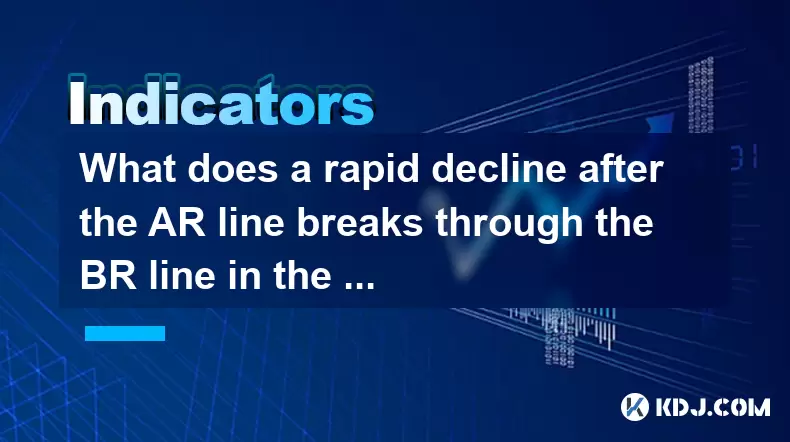
What does a rapid decline after the AR line breaks through the BR line in the ARBR indicator indicate?
Aug 09,2025 at 04:42pm
Understanding the ARBR Indicator ComponentsThe ARBR indicator is a technical analysis tool that combines two oscillators: the AR (Amplitude Ratio) and...

What does it mean when the Triple Moving Average (TRIX) turns downward but the price doesn't fall?
Aug 09,2025 at 12:42pm
Understanding the Triple Moving Average (TRIX) IndicatorThe Triple Moving Average, commonly known as TRIX, is a momentum oscillator designed to filter...

What does it mean when the Williams' oscillator repeatedly hits bottoms but fails to rebound?
Aug 09,2025 at 09:28am
Understanding the Williams %R OscillatorThe Williams %R oscillator, developed by Larry Williams, is a momentum indicator used in technical analysis to...

What does it mean when the upper and lower Bollinger Bands narrow?
Aug 09,2025 at 03:00pm
Understanding Bollinger Bands in Cryptocurrency TradingBollinger Bands are a widely used technical analysis tool in the cryptocurrency market, develop...

What does it mean when the RSI forms a double top above 70?
Aug 09,2025 at 05:50pm
Understanding the RSI and Overbought ConditionsThe Relative Strength Index (RSI) is a momentum oscillator that measures the speed and change of price ...

What does it mean when the 5-day moving average crosses the 10-day moving average but the 20-day moving average remains upward?
Aug 09,2025 at 03:35pm
Understanding Moving Averages in Cryptocurrency TradingMoving averages are foundational tools in technical analysis, especially within the cryptocurre...

What does a rapid decline after the AR line breaks through the BR line in the ARBR indicator indicate?
Aug 09,2025 at 04:42pm
Understanding the ARBR Indicator ComponentsThe ARBR indicator is a technical analysis tool that combines two oscillators: the AR (Amplitude Ratio) and...
See all articles

























































































